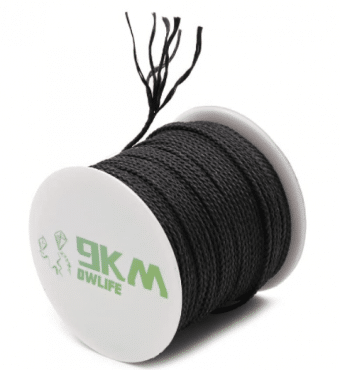Foreword
First of all, in 2023, your survival skills and situational awareness are what will save you in an emergency, even in the worst-case one. Besides, a bagful of survival gear can significantly maximize your survival chances. Besides food supplies and water resources, one should get to know what other things can come in handy during a survival situation. All professional homesteaders, survivalists, and preppers should ensure they have that knowledge. Review detailed instructions on how to make rope. So read the article carefully not to miss out on any insightful facts!
The rope is a useful tool for each survivalist. It can be utilized in a huge amount of cases: from food preparation to hunting. The rope itself was used as a tool from ancient times! Our ancestors employed rope for hunting, lifting, attaching, and climbing practices. The ropes from ancient times were shaped as twisted and woven vines.
More to the point
For example, in ancient Egypt, the ropes were first mentioned as early as 4000 B.C. The ropes were made from animal hair, water reeds, leather skin of animals. Still, no one knows about how Egyptians carved and transferred the stones, but ropes were surely used for the construction of pyramids.
Or, let us cover the Chinese case. The Chinese people started making ropes in 2800 B.C., with the help of hemp fibers. Later on, the techniques of making ropes spread through all of Asia, India, and Europe. Speaking about Medieval Centuries, the European people created very long ropes that had a length of 300 yards. Such lengthy ropes were used for the service of large ships.
Only in the 18th century were machines used for making ropes in the factories. In the late 20th century, synthetic materials began to be used in the rope-making process. Remember: extension cord cannot be used as a rope in any case.
As of now, there are many types of rope: manila rope, polypropylene rope, natural fiber rope, climbing rope, polyester rope, cotton rope, pro-manila rope, and that is only the beginning! In this article, we will describe the types of rope by categories: material of the rope, rope types, and construction of the rope.
General Types of Rope
There are two general types of rope: natural and synthetic. For example, natural fiber ropes are very flexible, while synthetic ropes are firm. We will discuss both kinds in detail.
1. Natural Rope
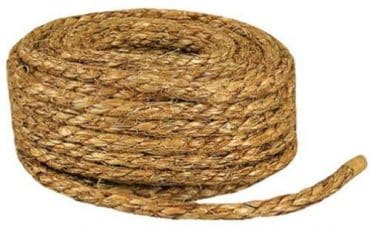
A durable and strong rope has many natural materials in it at once. Of course, synthetic rope is considered one of the strongest ones, and natural one is at risk of being damaged by water, mildew, mold, and even UV rays. On the other hand, such rope is not damageable by high heat, and it is not easily flammable!
Natural rope is prone to shrinking when it gets wet, and it can be tough to operate with once it gets wet and then dries again. The natural rope is perfect for packing things, as it does not get slippery once tied up. So, the rope is safe for gripping as well, and it would not get out of your hands. Moreover, the natural rope can be utilized biologically safely, i.e., it can decompose naturally.
2. Synthetic Rope
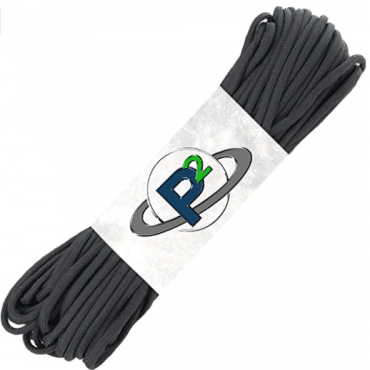
The main drawback of the synthetic rope is that once it is exposed to heat waves, it gets hot and eventually starts melting. Of course, it decreases the strength of the rope. Imagine sitting near the campfire, and the rope on your backpack starts melting just because it is placed near the fire. Yet, the rope of such kind is much more elastic. So, they are great for towing and lifting tools.
And, of course, synthetic rope is not eco-friendly. It is not biodegradable, nor is it renewable or reusable. So, in case you strive to help the environment, then your choice is the rope from natural fibers.
Construction of the Rope
1. Single-Braided Rope

2. Twisted Ropes
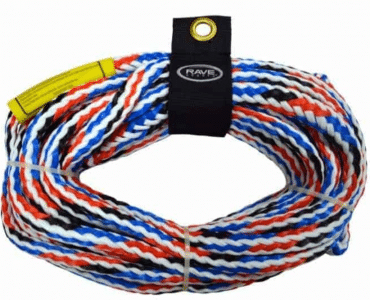
3. Plaited Rope
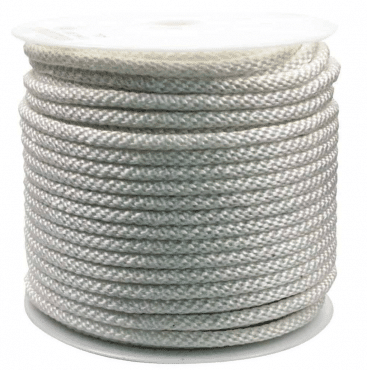
Due to this fact, the rope does not bend and tends to be very elastic, so one can easily handle it and tie it to something. Nonetheless, there are some problems with such kind of rope. The main drawback is that the fibers are going to be exposed, as they are covering the core. This implies that the threads are very much prone to damage. This can cause serious problems, but this fear is often compensated by how strong this type of rope is.
4. Hollow Rope
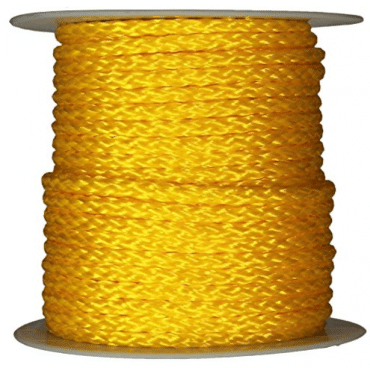
5. Double-Braid Rope

6. Diamond Braid Rope
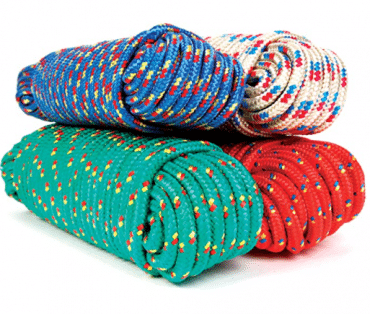
As a general rule, the diamond-braid rope is usually a little more expensive than other different types of rope available on the Web. Another beneficial point of this rope is that it is well-designed, and it looks good. Moreover, in contrast with other different types of rope, this one can be easily spliced. So, in this way, it is straightforward to work with it.
Material of the Rope
There are many various rope materials: polypropylene ropes, a manila rope, a polyester rope, and many other. They all serve different types of use, so let us discuss them in detail.
1. Poly Combo Rope
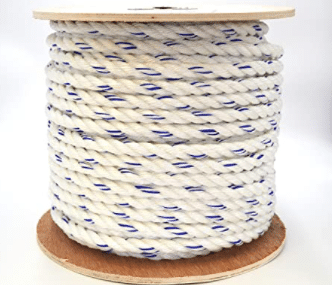
In case you require a rope for exercising, hanging swings, and landscape use in general, you should take a look at the poly combo rope. You will surely have no worries about the condition and appearance of your rope, as it will stay pleasant-looking for a really long time.
2. Manila Rope
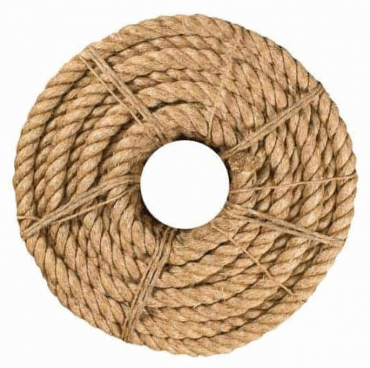
Despite the disadvantages of such material, the rope is surprisingly soft and flexible. This is beneficial in case you would like to hold the rope for a really long time; the skin on your arms will not eventually get rubbed off.
3. Polyester Rope

Of course, the rope is very durable, and that is why it is so trustworthy and popular on the market today. Moreover, it is used by marine survivalists in the sea and other water sources. The only thing that you need to know is that with time when the rope is exposed to water for a really long time, its color will eventually fade.
Not to mention, this rope is sometimes mistaken with nylon tope. The ropes have money in common; for example, both nylon and polyester rope are chemical-resistant. Moreover, the polyester rope is torque and stretch-free. This implies that the rope will stay in shape even if it is going to be stretched.
4. Polypropylene Rope
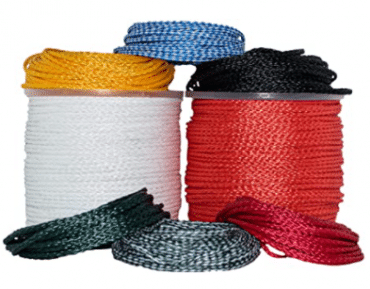
The main benefit of this durable rope is that it is dielectric. So, in other words, polypropylene rope will not conduct electricity. This is important for those people who work with electricity or for people who plan to hang the rope on the trees near electric wires. This rope will not let the electricity knock off the worker.
5. Nylon Rope

Not only is this rope durable, but it is also resistant to UV rays, which helps the rope last for a long time when used outside in the sun. Unfortunately, nylon rope will absorb water and will actually be weakened by water, which can result in the rope snapping. Knowing this, it is important that you do not use this rope in or around water or when you are expecting inclement weather.
6. Jute Rope

The jute rope may shrink in case it is exposed to water, so make sure to dry it out every time it gets wet.
7. UHMWPE Rope
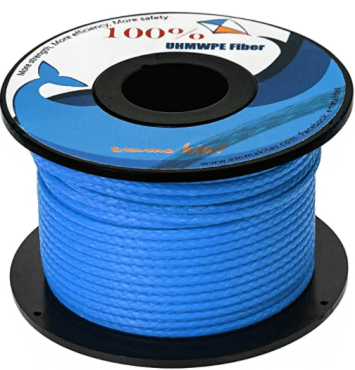
On the other hand, there are some drawbacks of UHMWP rope utilization. It is very slippery, so it frequently gets out of hand, and it is hard to make knots employing this rope. The rope has synthetic fibers, so it can melt once it is exposed to high temperatures or heat.
The rope itself is very expensive, so think twice while planning on such a tool.
8. Aramid Rope
Kevlar rope, Vectran, and Technore rope are the most popular rope of all Aramid ropes. Kevlar rope is a very long-lasting one and is considered to be one of the best types of rope available on the market. The Kevlar does not stretch nor ruse. It is also a perfect choice in case you desire to have a stable and strong rope: it will not move an inch once it is tied up. The rope is also freeze, flame, chemical resistant. In all of the extreme cases, this rope will serve you perfectly, and you will not worry about the possible damages.
Final Word
To sum up my review, I can say that there is plenty of various types of rope: polypropylene rope, manila rope, natural fiber rope, cotton rope, twisted rope, plaited rope, solid braid rope, plaited braid rope, kernmantle rope, even UHMWPE rope.
The ropes can be used for many tasks, both survival and everyday-use ones. Climbing, tying up, fighting, making knots, sailing – everything you desire. So, choose the right rope for your own purposes and rock the SHTF!
Frequently Asked Questions (FAQ)
What kind of rope is soft?
One of the softest ropes is the Jute rope, which is easily compressible. The linen rope is also one of the softest ones. Nonetheless, almost all of the soft ropes are not water-resistant and can be easily damaged, just as all of the natural ropes.
Polypropylene rope is also a very soft one, and I would say even a smooth one. It is very gentle once it touches your hand. So, it can be used as one of the climbing ropes: it will not rub off your skin when you grab it tightly.
Is nylon rope UV-resistant?
Eventually, nylon rope is resistant to many things, and UV light is not an exception. Being one of the synthetic ropes, it can be exposed to chemicals, light, and so on. The only thing that can weaken the properties of such rope is water. But the impact of water is not really strong, so nylon is still used for marine applications, e.g., for mooring lines and anchor lines.
How long does nylon rope last?
There is no strict shelf life prescribed for nylon ropes. All synthetic ropes are durable when properly stored, i.e., when you can, you should place them in a cold, dry, dark place.
The rope will weaken with time in case you use it frequently, although it is resistant to UV light and chemicals. All in all, it is thought that the rope is very long-lasting.

